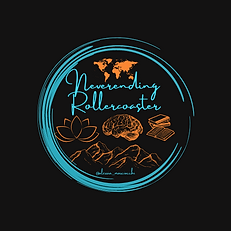The Path of the Spiritual Seeker: Understanding Sādhaka in Yoga Philosophy
- Alessia Masciocchi
- Mar 5
- 2 min read
Hello, beauties!
Today we will talk about how yoga can open the path to freedom. I hope you will enjoy this article about yogic philosophy.
Happy reading!

Introduction
In the vast universe of yogic philosophy, the concept of sādhaka (साधक) /saːd̪ʱəkə/ - the spiritual seeker - holds a special place.
But what exactly makes one a true seeker, and how does one walk this transformative path?
Let's explore this profound journey together.
The Power of Practice
The ancient yoga texts emphasize one fundamental truth: consistent practice is key.
Known as śāsana (शासन) /ʃaːsənə/ or abhyāsana (अभ्यासन) /əbʱjaːsənə/, this principle of constant practice forms the cornerstone of spiritual growth.
What's fascinating is that sādhanā (साधना) /saːd̪ʱənaː/ goes far beyond merely studying texts or wearing the robes of a yogī (योगी) /joːgiː/.
You can't become a true seeker by simply dressing like a saṃnyāsī (संन्यासी) /sənjaːsiː/ or talking about spiritual concepts.
Real transformation requires dedicated practice.
The Journey to Self-Discovery
Through consistent physical practice, practitioners gain access to something remarkable - the tattva jñāna (तत्त्व ज्ञान) /t̪ət̪ʋə dʒɲaːnə/, or the knowledge of fundamental truth.
This reveals the profound connection between our individual soul and the Universal Spirit.
The Chariot Analogy: A Timeless Teaching
One of the most beautiful explanations of this journey comes from the Kaṭhopaniṣad (कठोपनिषद्) /kəʈʰoːpənɪʂəd̪/.
In its third vallī (वल्ली) /ʋəlliː/, we find the famous chariot analogy, where Yama (यम) /jəmə/ teaches the eager seeker Naciketa (नचिकेता) /nətʃɪkeːt̪aː/.
Picture this:
The chariot represents your journey
The ātman (आत्मन्) /aːt̪mən/ (Self) is the lord of the chariot
Your manas (मनस्) /mənəs/ (mind) acts as the reins
The indriya (इन्द्रिय) /ɪnd̪rɪjə/ (senses) are the horses
The wise call this whole system the bhoktṛ (भोक्तृ) /bʱoːkt̪ɹ̩/ (Enjoyer)
The Two Types of Seekers
The text presents an interesting contrast:
The avivekī (अविवेकी) /əʋɪʋeːkiː/ - the undiscriminating seeker whose mind runs wild like untamed horses
The vivekī (विवेकी) /ʋɪʋeːkiː/ - the discriminating seeker who maintains control and direction
The Path of Renunciation
In this journey, tyāga (त्याग) /t̪jaːgə/ (renunciation) plays a crucial role.
But here's the key insight: we don't renounce the world itself, but rather what separates us from our highest potential.
We especially need to guard against asura (असुर) /əsurə/ (demonic) tendencies that lead us astray.
Understanding Karma and Its Fruits
The yogic path teaches us to perform karma (कर्म) /kərmə/ (action) without attachment to its phala (फल) /pʰələ/ (fruits).
This isn't about inaction but about acting with pure intention and dedication.
A Final Reflection
The true yogī (योगी) /joːgiː/ stands out by their commitment to duty rather than rights.
While others might sleep through their responsibilities and wake only to claim their dues, the spiritual seeker remains ever-vigilant in their sacred duty.
And you, where would you put yourself in this yogic journey?

Comments